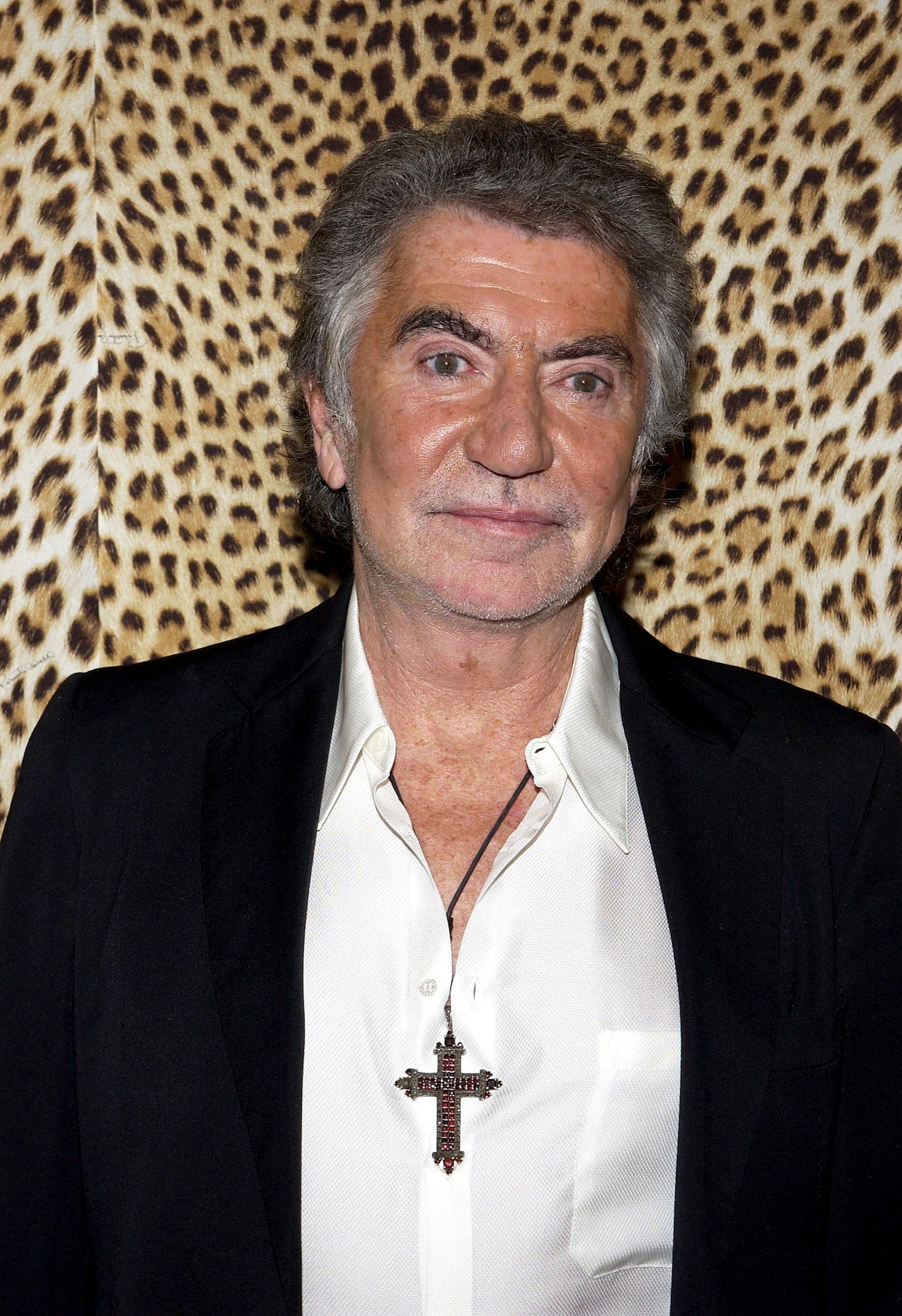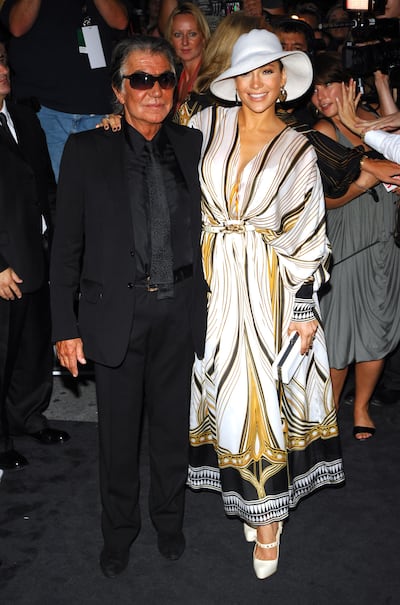
The Business of Fashion
Agenda-setting intelligence, analysis and advice for the global fashion community.

Agenda-setting intelligence, analysis and advice for the global fashion community.

They didn’t call him the “king of bling” for nothing.
There was nothing subtle about Roberto Cavalli, the designer known for his maximalism and over-the-top animal prints, not on his runways and certainly not in his personal life, which was splashed all over the Italian tabloids every time he went to the beach in a tiny bathing suit or fathered another child, which was with some frequency in his later years. Cavalli, who died in Florence on Friday at the age of 83, was a larger-than-life character who built a fashion empire based on his own image, a picture of Italian swagger, which he called the “Cavalli World.”
From his 15th century farmhouse outside Florence, Cavalli commanded 40 acres of Tuscan hillside populated with thousands of olive and cypress trees, sprawling gardens, swimming pools, a Turkish bath, an armada of racing cars (including a 1970 Ferrari Daytona) and a massive garage built for his custom-designed, iridescent-painted helicopter, which he piloted himself for his daily commute to work. His elaborately carved bed frame was a prop from a runway show inspired by Marchesa Luisa Casati. Most of the furniture was upholstered in fabrics from past collections featuring animal prints not found in nature. Live animals, too, were everywhere: squawking cockatoos, a large German shepherd, two tiny Yorkshire terriers and, once upon a time, a spotted Savannah cat named Cialis.
The excess of his surroundings, he often told visitors while chomping on a cigar, was a tribute to his success: annual sales at Roberto Cavalli — which offered everything from ready-to-wear to accessories, watches, jewellery, fragrance, eyewear and underwear — peaked around $250 million in 2014, the year before the designer sold a majority interest in his business. Befitting his decadent lifestyle, he also designed nightclubs and mega-yachts and had his own brand of vodka. For much of the 2000s and into the next decade, Cavalli’s outré designs became red carpet staples, his body-baring tropical dresses worn by the likes of Beyoncé and Jennifer Lopez. But his company was also plagued by operational and management issues that were never fully resolved under a series of owners and new designers once Cavalli retired.
ADVERTISEMENT

Cavalli himself seemed to recognise that his cultural impact was very much tied to a moment when sex sold. Although he began designing in the 1960s after his studies at the Art Institute of Florence, Cavalli — whose grandfather Giuseppe Rossi’s paintings are exhibited in the Uffizi Gallery — struggled to find an audience for years. When he started the Roberto Cavalli company in 1970, already selling vividly printed boho fashions, even printed leather, no one was buying his look. It wasn’t until the breakthrough of Gianni Versace in the 1990s that minimalism began to fade, leaving space for the more provocative style favoured by the young Italians.
“Before that, everything was flat in fashion,” Cavalli said in 2001, when he had become the go-to designer for celebrity flash. “It was like perfume or soap in that everything was the same. Glasses were normal. Watches were normal. There was a flattening in creativity, but I brought something different.”
During the “Sex and the City” years, Cavalli became as much of a celebrity as the women he dressed, opening stores around the world. Courtney Love and Lenny Kravitz promoted his work, and Cavalli latched onto the Hollywood set, befriending producers and directors and inviting them to enjoy the spoils of his villa. (Anthony Hopkins came by to use the gym almost daily during the filming of “Hannibal.”) In 2003, he served as the grand marshal of New York’s Columbus Day parade, blowing kisses to strangers on Fifth Avenue from a teal Alfa Romeo Spider convertible, surrounded by an entourage of 20 models riding Ducati motorcycles.
“The celebrity connection is very important,” Cavalli said. “It’s more important to me personally than to anyone else because it makes me feel important… It’s important because it’s adrenaline, and that’s what starts creativity.” By 2014, the company had 179 stores for his signature brand and the denim-focused diffusion label, Just Cavalli, which accelerated the brand’s international growth but also caused the business to lose money for years as it faced complications with its licensees. As with everything Cavalli, the excess sometimes became too much, as critics sniped over the increasingly loudness of his clothes. His 2007 collaboration with H&M, which included leopard tights and sheer briefs, was panned for its cartoonish sex appeal.
After Cavalli sold a majority stake in the company to Clessidra, a private equity fund, in 2015, Peter Dundas took over the brand’s creative direction, only to be replaced two years later by Paul Surridge, who himself left the house in 2017. After a bankruptcy in 2019 that saw the closure of the brand’s stores and operations in the United States, Cavalli was sold to the Dubai luxury real estate developer Hussain Sajwani, who named Fausto Puglisi creative director in 2020. “It is the greatest honour of my career to work under your legacy and to create for you the brand you founded with such vision and style,” Puglisi said on Instagram.
Cavalli’s personal life was the subject of much public fascination, too. He met his second wife, Eva Duringer, during the Miss Universe pageant in 1977, when he was a judge and she was Miss Austria. Eva Cavalli was his design partner for many years and together they had three children. The couple continued working and living together after ending their marriage around 2010. Last year, at 82, Cavalli had a son, his sixth child, with Sandra Nilsson, a former Swedish model. Cavalli had a sense of humour about himself and often poked fun at his own narcissism, which was not always politically correct. He collected rare animals and objects with the same sense of abandon that he designed his prints, even at the risk of causing offence.
“I remember at the beginning, some of my friends said, ‘Oh Roberto, you use too many kinds of decoration,’” he said. “What do they care what I put in my house? I choose pieces that remind me of my life.”
The deal is expected to help tip the company into profit for the first time and has got some speculating whether Beckham may one day eclipse her husband in money-making potential.
The designer has always been an arch perfectionist, a quality that has been central to his success but which clashes with the demands on creative directors today, writes Imran Amed.
This week, Prada and Miu Miu reported strong sales as LVMH slowed and Kering retreated sharply. In fashion’s so-called “quiet luxury” moment, consumers may care less about whether products have logos and more about what those logos stand for.
The luxury goods maker is seeking pricing harmonisation across the globe, and adjusts prices in different markets to ensure that the company is”fair to all [its] clients everywhere,” CEO Leena Nair said.